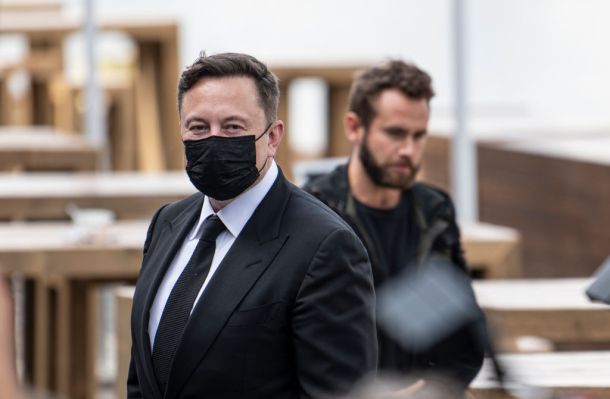A solid public relations team solves many issues within a company.
It helps spread important news announcements and topics integral to a company’s success. It communicates with the media in a timely manner to ensure accurate coverage and control the conversation. It builds a state of trust and engagement that propels a company’s vision and goals forward. Unless of course that company is Tesla, in which case it wants none of that.
According to numerous internal sources confirmed by automotive blog Electrik, Tesla has been slowly dissolving its internal PR department over the course of this year, leaving the sole voice of the company its founder, Elon Musk.
If true, this is a confounding decision by Musk and the decision-makers at Tesla.
What this creates for Tesla is a black hole of information coming from the company. Facts will be obfuscated if there is no official position on whatever happens in the news. For instance, consider the recent cases of self-driving collisions or a roof flying off a new car.
Or last month, when there was a major outage in Tesla vehicles, the press was left to speculate. There is no longer a PR department to reply to these incidents. It seems that Tesla has adopted a crisis management strategy that appears to think that the best course of action is to ignore future crises and they will just go away on their own. Unfortunately for Tesla, real life doesn’t work like that.
Crises don’t just go away. They become bigger and bigger, unless there is some sort of honest response from the company. While in this era of social media it might feel like a crisis will eventually be overwhelmed by other news, the truth is that it sticks to the reputation of the company for a long time. Every time a journalist writes about that company, in this case Tesla, that crisis history is refreshed and resurfaced for public consumption. Until that crisis is resolved by a reactive PR team, it still exists in the minds of journalists and as cited reporting. It creates a sort of case history on the company, a continuing point of crisis-related references.
Not all crisis PR has to be reactive. One thing Tesla has done well in the past is proactive outreach. Without a PR department, anything that comes from the company is left to interpretation by journalists and the public. With proactive PR, Tesla would have been able to tell the right story, provide the right reasons that truly reflect its mission and goals. Without it, whatever Tesla does next is left to speculation and guessing as to the reasons behind it. While some actions might seem obvious (correcting a known error in its Autopilot software for instance), many actions would need PR intervention to be interpreted in line with Tesla’s intent.
There is a sense that because this is Tesla, certainly one of the best-known auto manufacturers on the planet at this point, its decision-makers don’t seem to think that they need PR. Tesla knows that its product speaks for itself and when it can’t, Musk will send a pointed tweet to be interpreted any dozens of ways. However, not communicating with the media will not stop the media from writing about the company, it will only stop the media from writing accurately about the company. What happens the next time there is a crisis and there is no PR to respond and control the conversation with internal facts and rebuttals?
At first, this will lead to a Wild West style of reporting on Tesla. Journalists will write whatever they feel, with little regard to worrying about receiving a response from Tesla. Eventually this will turn to resentment and create a negative relationship (if you can even call it that if one party is no longer involved) with Tesla as facts become scarce and reporters are left with only speculation. The result here is that speculation will lead to frustration as journalists cannot simply stop reporting on Tesla, but their reporting will suffer without official company positions on items that need fact checking. Consider the fact that a lot of reporting on Tesla is related to future technologies, a subject that almost always requires clarification from the source.
This situation leaves founder Elon Musk as the lone voice of Tesla.
Any messaging we can expect from Tesla will be filtered through Musk’s often strange and disjointed Twitter account where he opines about not owning a house, speaks of his weed experiences and generally trolls his own company. However, we should remember that Tesla is not just a one-man show.
While Musk may have founded the company and it thrived under his ideas and leadership, this is a complete disservice to the employees of Tesla. This decision will affect the engineers and developers, marketing teams and all employees who put their all into the technology and company image, only to have it eventually misrepresented in the media. Without a coherent, functional PR department Tesla becomes a silent behemoth existing without much-needed lines of communication.
While there is always a love/hate relationship between PR and journalists, the truth is that journalists love information that bolsters their reporting. They need PR professionals just as much as PR professionals need them to write about their brands. Journalists might not admit this openly, but when it comes to internal PR for a company like Tesla, that relationship is integral to accurate and timely reporting as speculation and guessing only goes so far.
Without a PR department, Tesla is leaving itself open to inaccuracies in reporting as well as a crumbling relationship with the media. Will this matter to Musk and Tesla in the long term? Will it affect car sales? The future will surely tell us. Will not having a PR department affect the reputation of both Tesla and Musk next time there is a crisis, a self-driving collision or worse? If Tesla had a PR department, it could answer that question.
